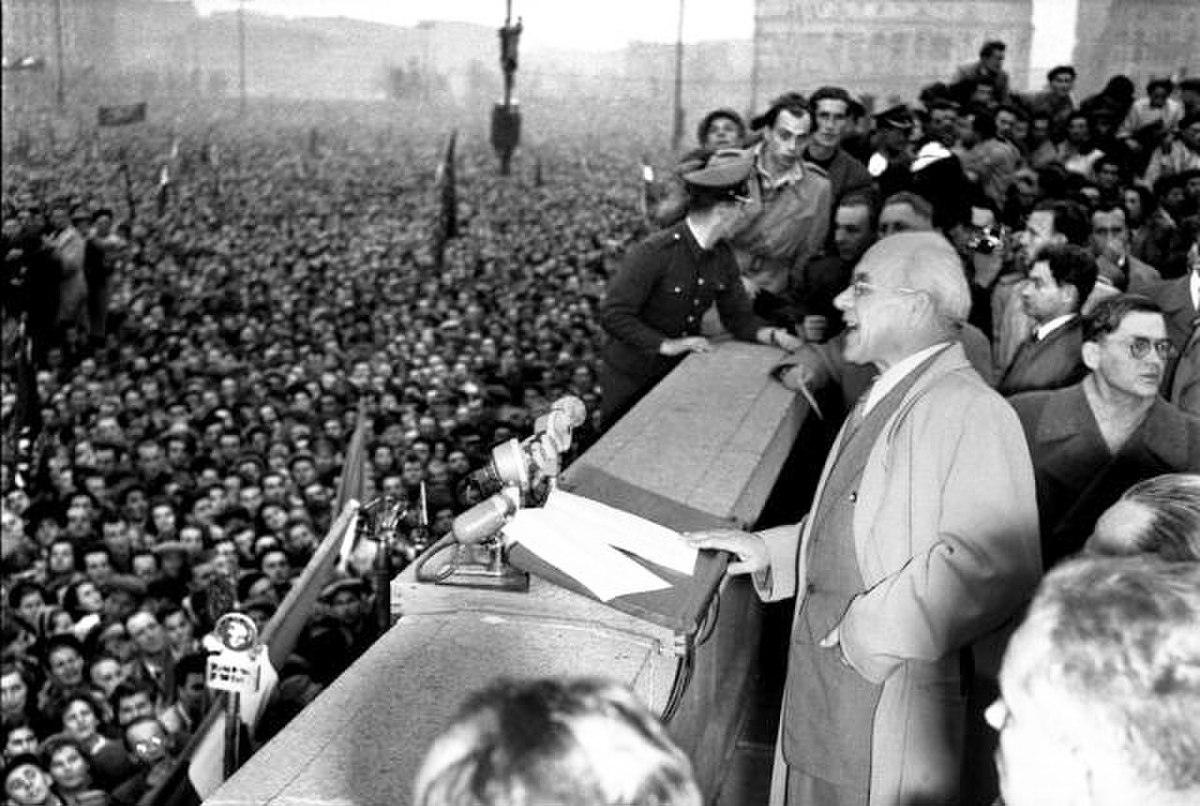
The Thaw
PolandIn March 1956, after the 20th Congress of the Communist Party of the Soviet Union in Moscow ushered in de-Stalinization, Edward Ochab was chosen to replace the deceased Bolesław Bierut as first secretary of the Polish United Workers' Party. As a result, Poland was rapidly overtaken by social restlessness and reformist undertakings; thousands of political prisoners were released and many people previously persecuted were officially rehabilitated. Worker riots in Poznań in June 1956 were violently suppressed, but they gave rise to the formation of a reformist current within the communist party.
Amidst the continuing social and national upheaval, a further shakeup took place in the party leadership as part of what is known as the Polish October of 1956. While retaining most traditional communist economic and social aims, the regime led by Władysław Gomułka, the new first secretary of the PZPR, liberalized internal life in Poland. The dependence on the Soviet Union was somewhat mollified, and the state's relationships with the Church and Catholic lay activists were put on a new footing. A repatriation agreement with the Soviet Union allowed the repatriation of hundreds of thousands of Poles who were still in Soviet hands, including many former political prisoners. Collectivization efforts were abandoned—agricultural land, unlike in other Comecon countries, remained for the most part in the private ownership of farming families. State-mandated provisions of agricultural products at fixed, artificially low prices were reduced, and from 1972 eliminated.
The legislative election of 1957 was followed by several years of political stability that was accompanied by economic stagnation and curtailment of reforms and reformists. One of the last initiatives of the brief reform era was a nuclear weapons–free zone in Central Europe proposed in 1957 by Adam Rapacki, Poland's foreign minister.
Culture in the Polish People's Republic, to varying degrees linked to the intelligentsia's opposition to the authoritarian system, developed to a sophisticated level under Gomułka and his successors. The creative process was often compromised by state censorship, but significant works were created in fields such as literature, theater, cinema and music, among others. Journalism of veiled understanding and varieties of native and Western popular culture were well represented. Uncensored information and works generated by émigré circles were conveyed through a variety of channels. The Paris-based Kultura magazine developed a conceptual framework for dealing with the issues of borders and the neighbors of a future free Poland, but for ordinary Poles Radio Free Europe was of foremost importance.
